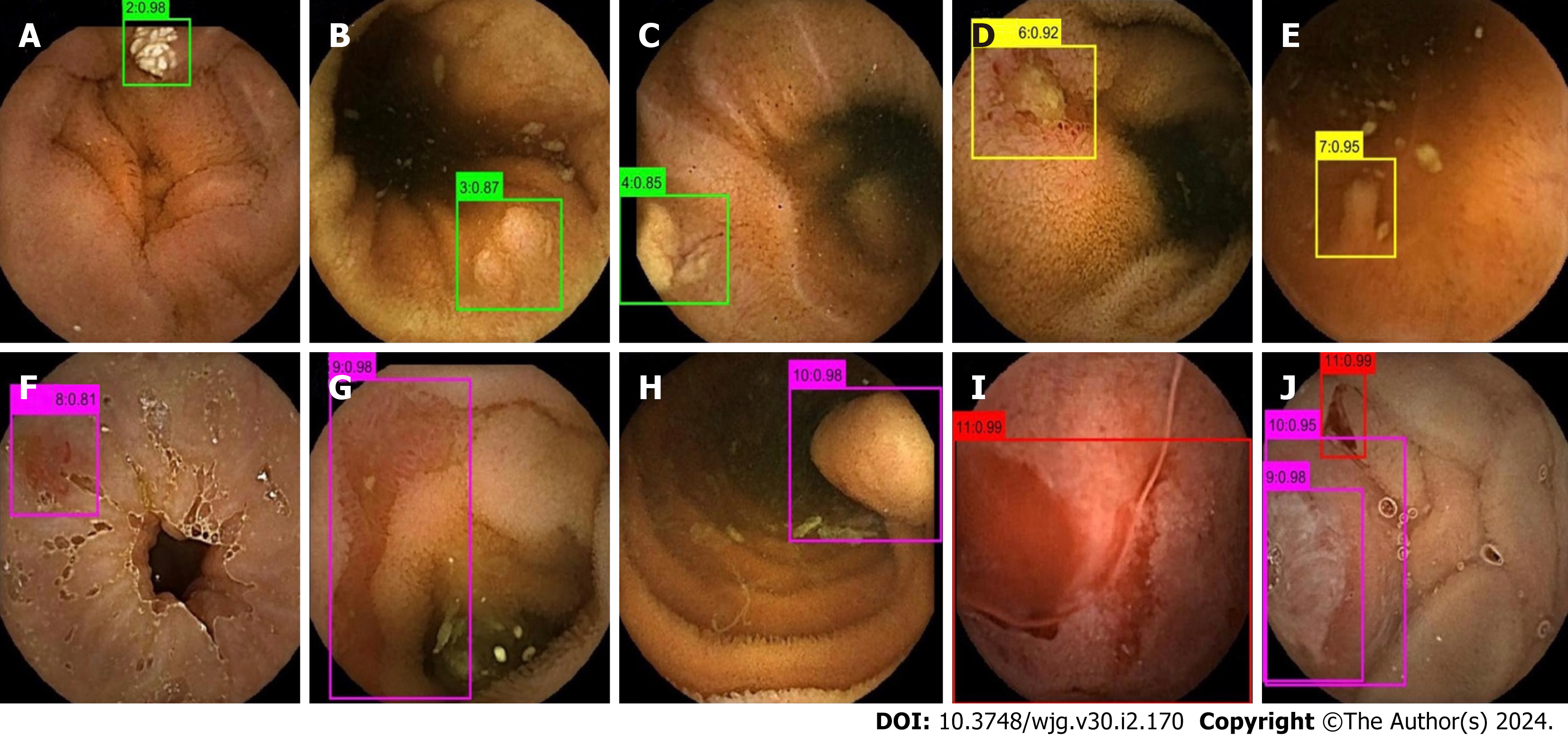Copyright
©The Author(s) 2024.
World J Gastroenterol. Jan 14, 2024; 30(2): 170-183
Published online Jan 14, 2024. doi: 10.3748/wjg.v30.i2.170
Published online Jan 14, 2024. doi: 10.3748/wjg.v30.i2.170
Figure 6 Output of YOLO-V5.
Boxes with different colors in the output image represent different bleeding risks; Green represents no bleeding risk; Yellow represents uncertain risk of bleeding; Magenta represents high bleeding risk; Red represents bleeding. Different numbers in the output image represent different lesion types. A: P0Lk (lymphangiectasia); B: P0Lz (lymphoid follicular hyperplasia); C: P0X (xanthoma); D: P1U (ulcer smaller than 2 cm); E: P1P (protruding lesion smaller than 1 cm); F: P2V (vascular lesion); G: P2U (ulcer larger than 2 cm); H: P2P (protruding lesion larger than 1 cm); I: Bleeding (B); J: P2P (protruding lesion larger than 1 cm), P2U (ulcer larger than 2 cm), and B. Decimal point represents probability.
- Citation: Zhang RY, Qiang PP, Cai LJ, Li T, Qin Y, Zhang Y, Zhao YQ, Wang JP. Automatic detection of small bowel lesions with different bleeding risks based on deep learning models. World J Gastroenterol 2024; 30(2): 170-183
- URL: https://www.wjgnet.com/1007-9327/full/v30/i2/170.htm
- DOI: https://dx.doi.org/10.3748/wjg.v30.i2.170









